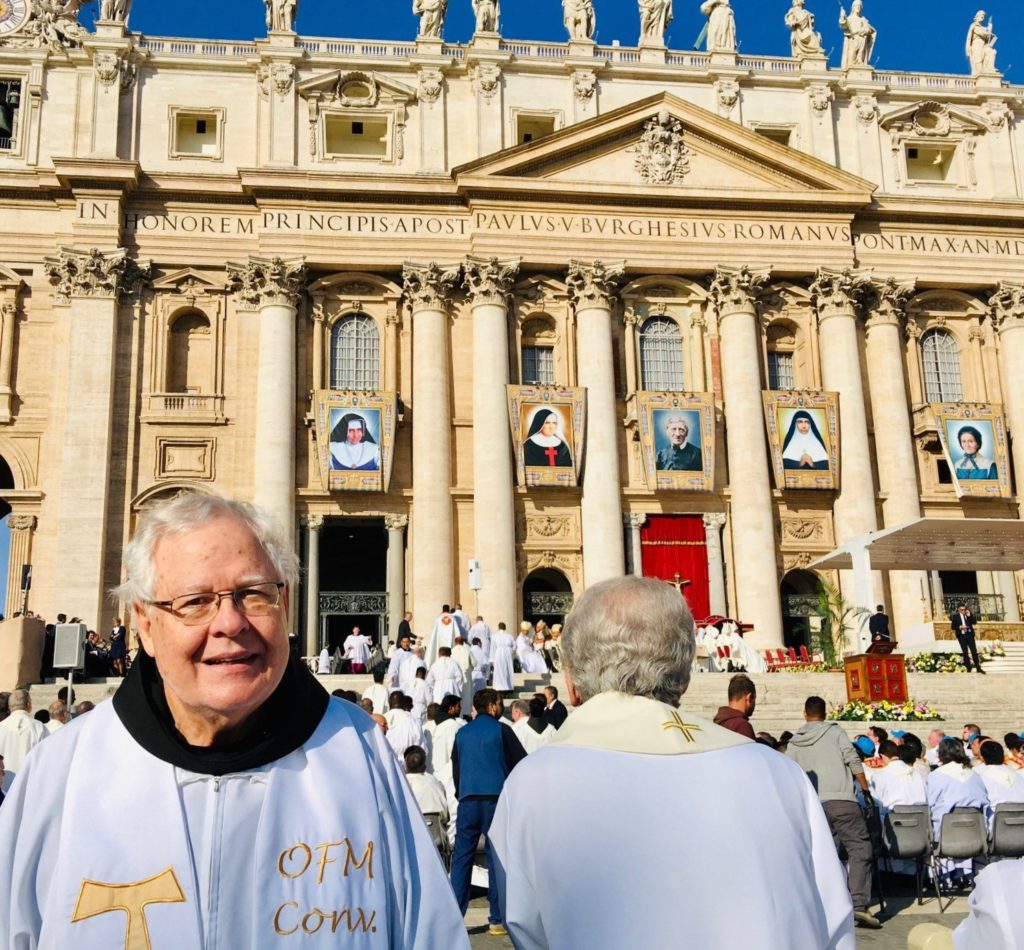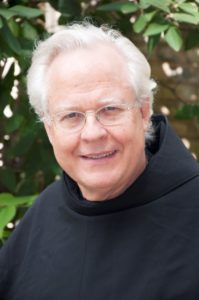 From Newman as a Critic of Modernity
From Newman as a Critic of Modernity
To Vatican II as Newman’s Council
I have nothing of that high perfection, which belongs to the writings of saints,
…I trust that I may claim …[in] what I have written, … an honest intention, absence of private ends, temper of obedience, willingness to be corrected, dread of error,
desire to serve Holy Church, and, through Divine Mercy, a fair measure of success.[1]
Since 1969,[2] I’ve been privileged to study John Henry Newman.[3] Imagine my joy on Sunday morning, 19 October 2019, at St. Peter’s, Rome, when Pope Francis canonized Newman. I cannot emphasize enough why Newman was prophetic in his denunciation of modern rationalist forms of Christianity which, in his view, has capitulated to secular reason fully established in the 19th century as both the default intellectual position as well as the[4] new social imaginary. Using Newman’s Idea of a University as a standard, I intend to hand on why Newman as prophet of lamentation and as prophet of jubilation helps to “Rebuild the Church.”
To plumb deeper into lamentation and jubilation as Newman’s critique of secular forms of Christianity he regarded as counterfeit, is to shout out Newman’s prophetic voice in defense of the picture of God as totally Other. To appropriate human response rests on religious fear and awe. It is an honest view of human beings as sinners that are capable through grace of becoming saints (jubilation) or scoundrels (lamentation). It means conviction that faith has prerogatives over instrumental or moral reason, that what matters is making judgments about behavior that pertain to one’s salvation. It means recognizing Newman’s prudent resistance to and refutation of highly processed forms of Christianity in modernity. It means recognizing how secular Christianity disguises itself as genuine and immunizes itself. A more recent and pernicious phenomenon is “weaponized incomprehensibility”[5] that is besieging our values.
As a standard, was Newman’s Idea of a University a success or failure? A dismal failure for it never became a reality. The Idea of a University was based on the Oxford model with its roots in Aristotle’s system of broad cultural education, paideia, and linked to the origin of the modern university as founded by the Catholic Church in the 13th century at Paris, Padua, Bologna, and Oxford. A university is not a seminary, and that misunderstanding with the Irish Bishops was not bridged. Yet Newman wrote a classic, a coherent and powerful vision of the concept of university that has a signified, adequate, expressed, enormous influence as synthesis with all its details to this day. Shortly before he died, Fr. Hesburgh, C.S.C said to me: Newman’s Idea of a University was just that, a powerful synthesis whose principles helped him to lead the University of Notre Dame for thirty-five years as its president.
Newman’s quote upon acceptance of the cardinalate encapsulates his debt to the ancient classical system proximate to his Oxford classical studies. He embraces his limits as a creature and sinner with freedom and self-transcendence. His understanding and commitment to Church AND World reflect an inheritor of that line from the great saints as Francis of Assisi, and a precursor of Vatican II’s emphasis on reform, renewal, and updating. Understanding Aristotle’s paideia, the Medieval universities, the Oxford model as a youth, contributed to the university curriculum he created for Dublin. Negotiation between Church AND World is constitutive of the Roman Catholic Church.[6] Fr. Hesburgh saw his work at Notre Dame as a progression of Newman, with philosophy as a synthetic state of mind providing integration.
Pope St. John XXIII’s call for Aggiornamento did not equate with thinking that updating for the whole Church meant only when the Church was fully egalitarian. Second, there was never a break with the past at Vatican II, for it would not be the Catholic way. The Church negotiates because it is “in” AND “for” the World, but the Church is not the World. The Church has a supernatural end. The Documents of Vatican II give expression to the balance of two lines of interpretation which are ongoing. Lumen Gentium, on the mystery of the Church, and Gaudium et Spes, on the Church AND World, are a balance between the two lines of interpretation. The dominant interpretation after Vatican II, which is the wrong interpretive strategy to Pope Benedict XVI, is the lens of social justice as the only interpretation of the purpose of the Catholic Church.[7]
In The Idea of a University, Newman avoids being clever or appearing to win. To be clever gets old and, ironically, never grows. To be clever is to be permanently frozen. The beauty of argument is towards development of a bridge between views. Second level order of reflection on the data of Christian faith in history and interpreting the development of the Church’s institutions assists theology as a form of knowledge that is public, one that is able to draw conclusions that verify its intuitions, and enable a person to intervene in public space.
Newman’s gentleman[8] in The Idea of a University describes a “gentleman” not of Christianity, but of civilization, a good citizen. St. Paul’s Christian character in its most graceful form and with its most beautiful hues depends on lifelong formation and cultivation of virtue that is more than ornamental. The Idea of a University lists the Church’s duties: to cure and keep its members from sin by teaching justice and chastity, the judgment to come, faith, hope, devotion and honesty, with elements of charity that puts souls on the way of salvation, aspiring to be heroic, attaining to various degrees of what is beautiful.[9] In the 21st century information explosion we gasp for air trying to answer what constitutes a university education. I read Newman’s Idea of a University as a serene text that is more and more relevant today.
Fr. Edward J. Ondrako, OFM Conv., Univ. of Notre Dame, Easter Reflection 4 eondrako@alumni.nd.edu
________________________________________
[1] J. H. Newman, Biglietto Speech, 12 May 1879. Given upon acceptance of the cardinalate.
[2] P. D. Fehlner, OFM Conv. was the first to teach Newman a Franciscan systematic approach.
[3] A. J. Boekraad, MHM in 1973-1974; John Ford, C.S.C at CUA in 2006; Oxford Conf. with I. Ker et. al, @ Nat Inst of Newman Studies; SJHNA Conferences; C. O’Regan at Notre Dame since 2010; Dissert. at Syracuse University on Newman and Gladstone,1994; Ed., Newman Scotus Reader, 2015, rpt canoniz. issue, 2019; Dissert. at Notre Dame, Rebuild My Church, 2021.
[4]The Documents of Vatican II with Notes and Index (Vatican Trans: 2009, rpt. 2020).
[5] Weaponized incomprehensibility implies: “if I do not understand something, you are the fool.”
[6] The difficulty was compounded by the refusal of the Catholic Church to negotiate with modernity.
[7] Responsible complaints from the faithful most often are in this register, i.e., too social justice oriented.
[8] Idea, 208-210.
[9] Idea, 203.
Fr. Edward J. Ondrako, OFM Conventual
Research Fellow Pontifical Faculty of St. Bonaventure, Rome
Visiting Scholar, McGrath Institute for Church Life
University of Notre Dame
May 20, 2022
